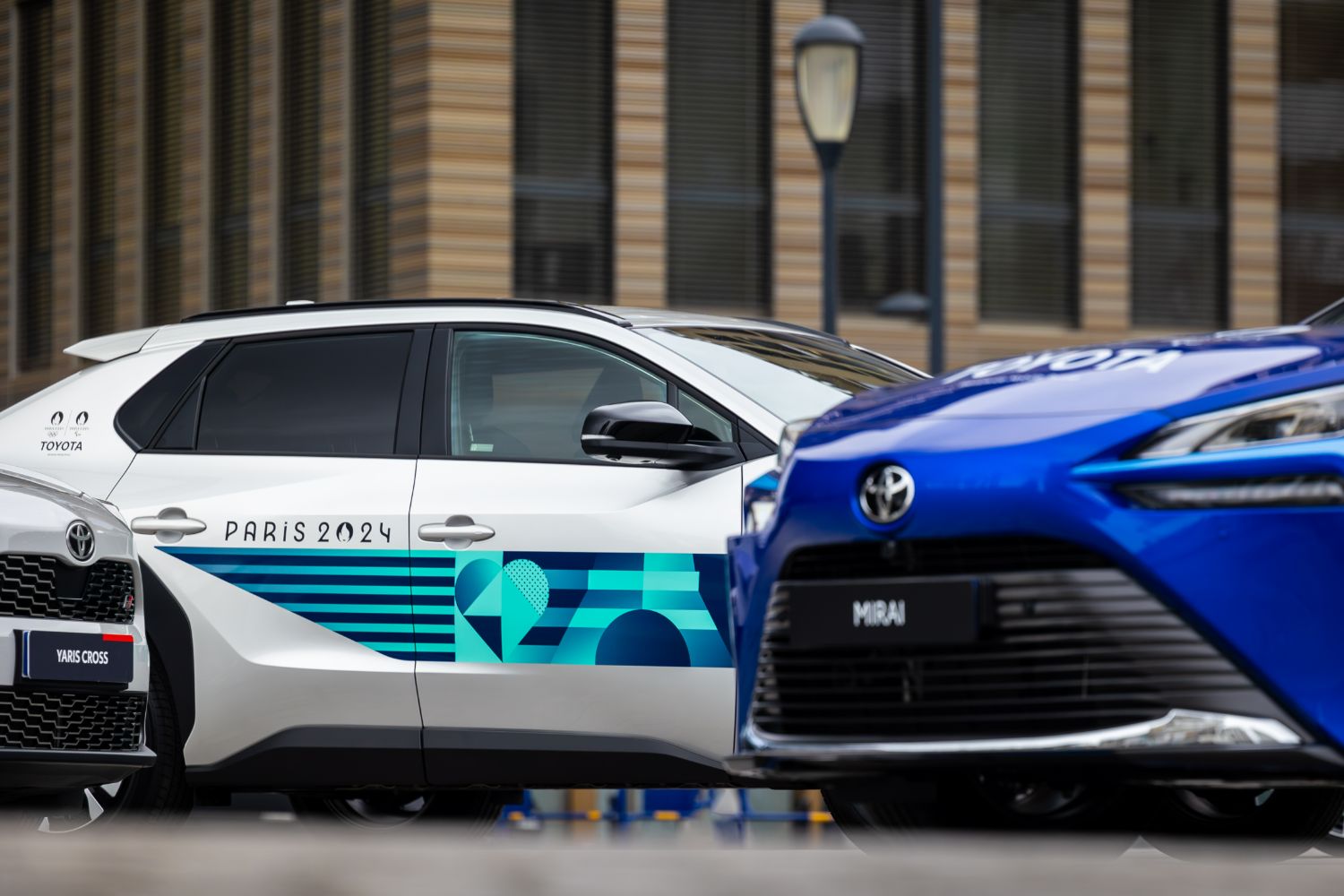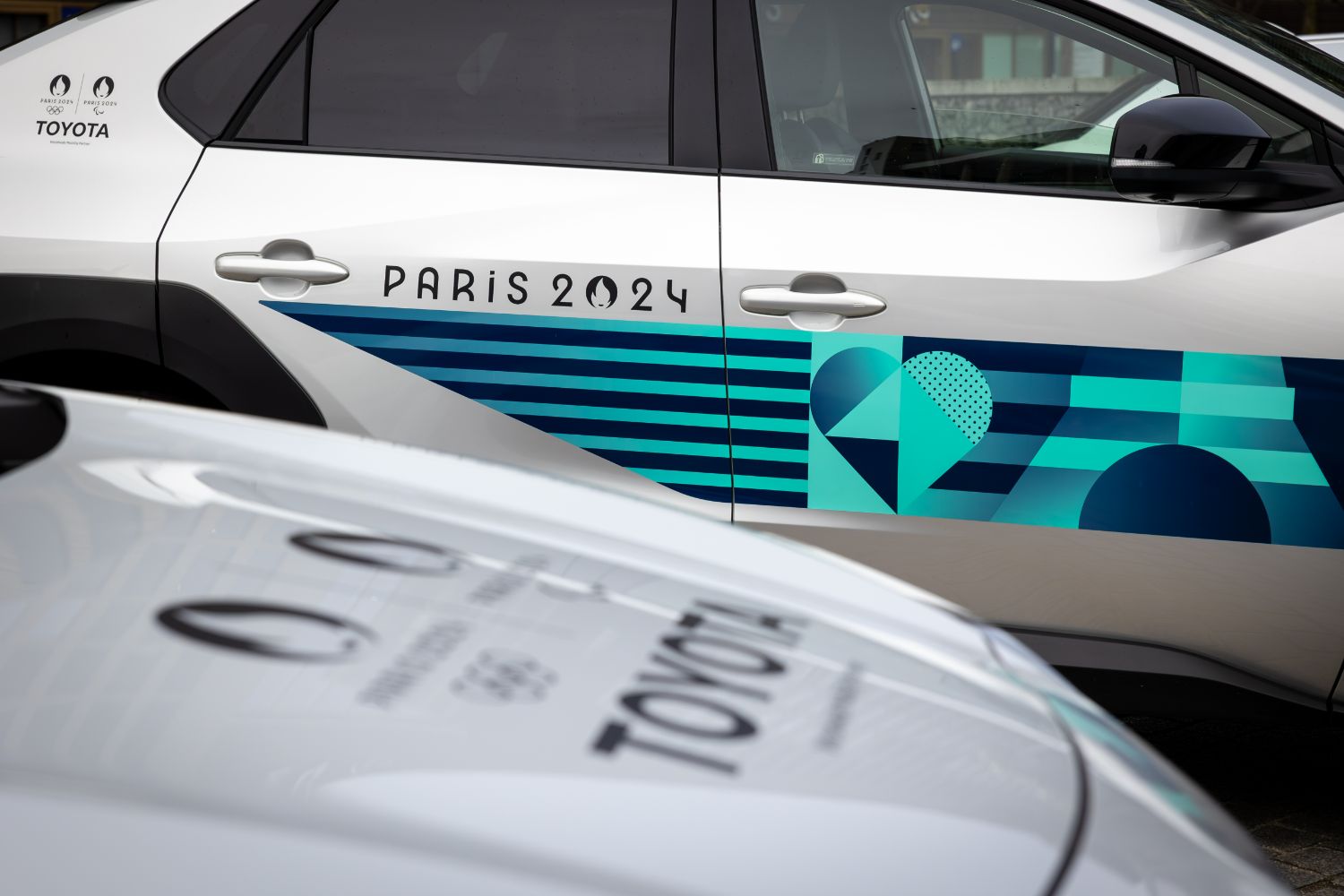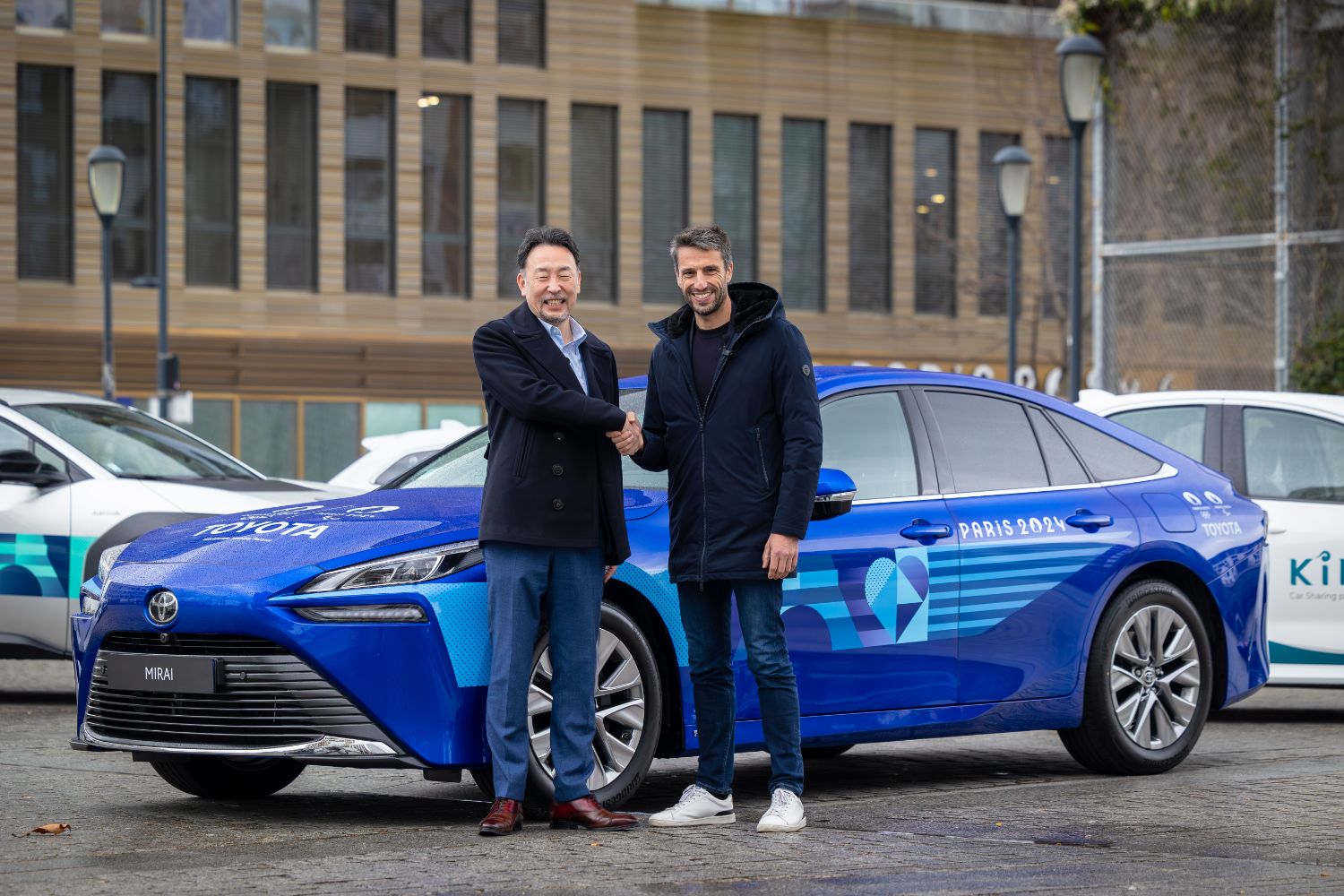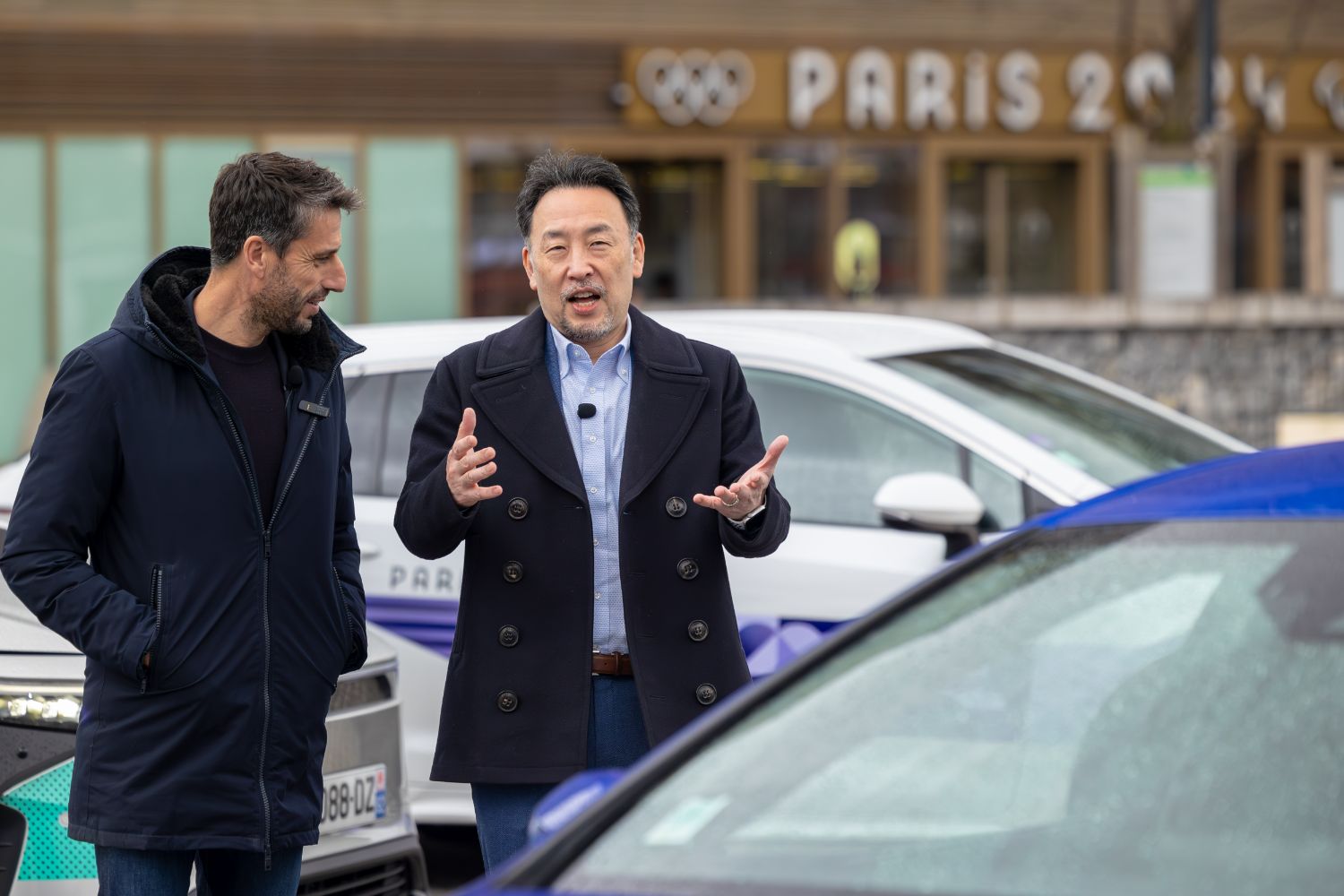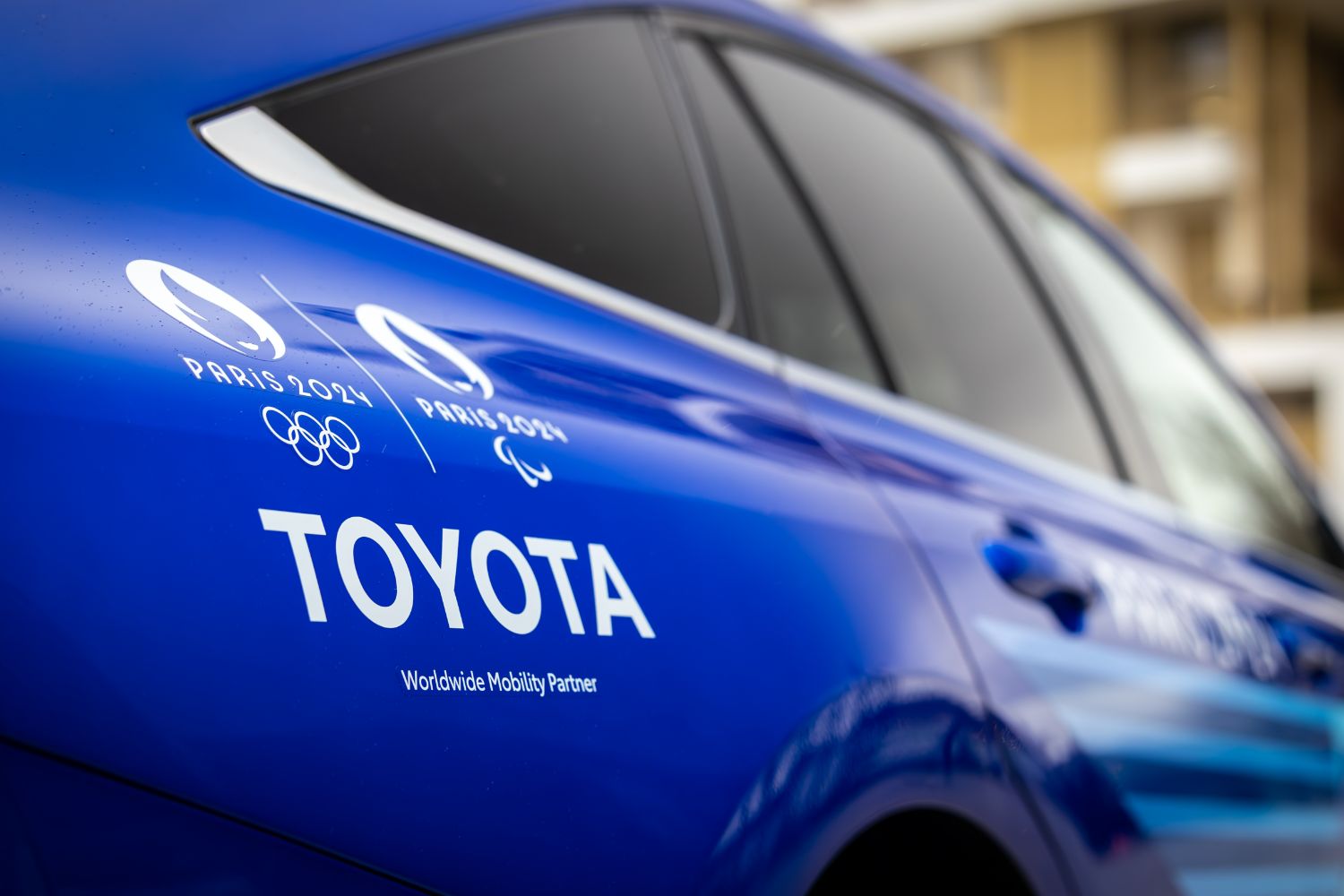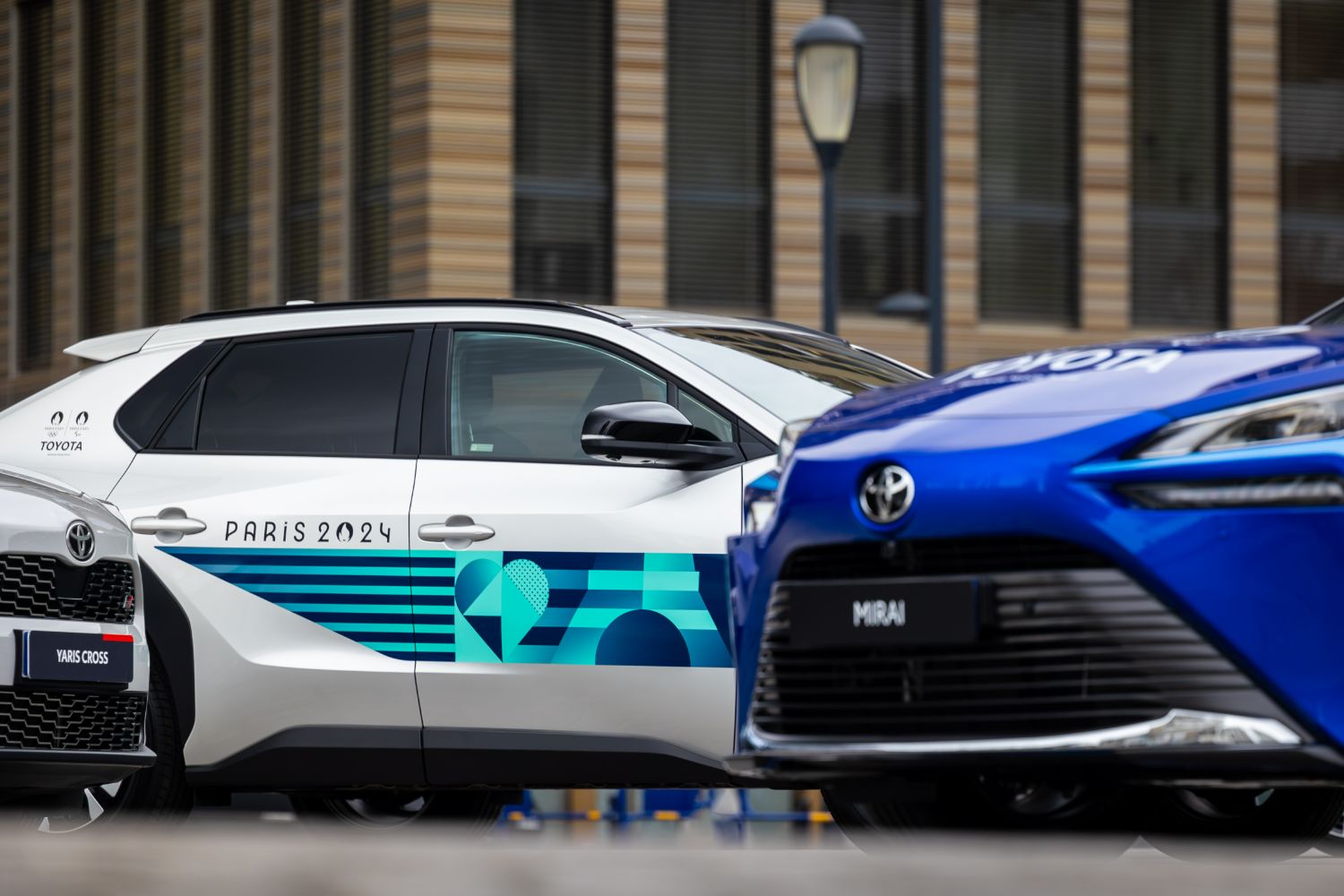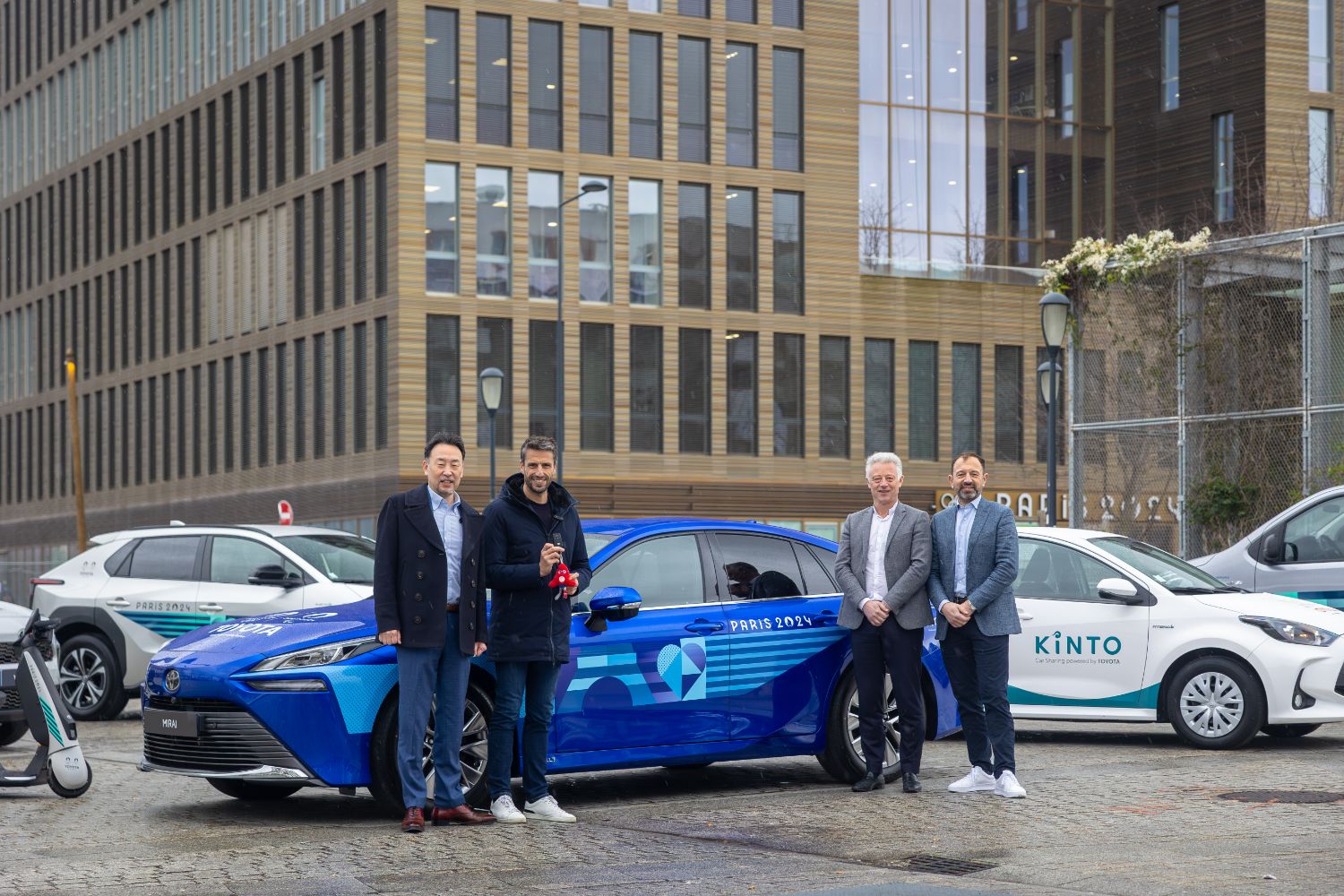Toyota has been a major partner of both the Olympics and Paralympics for some time now, and the Japanese car maker has a history with the Games stretching back as far as 2015. So it's no surprise that Toyota has just dispatched a bundle of cars to Paris to act as official transport for the upcoming 2024 running of the Games. However, aside from the transport aspect, there's a bit of a statement in the cars being used...
2,650 vehicles
For the 2024 Olympics and Paralympics, Toyota is going to supply a passenger vehicle fleet of more than 2,650 electrified vehicles and 700 electric last-mile mobility solutions.
What are those? Those are electric-powered shuttles called Accessible People Movers, or APMs. Toyota originally developed these neat little four-seat electric buggies, perfect for navigating through narrow city streets, for the 2020 Tokyo Olympics. They're wheelchair and limited-mobility accessible, of course, and can be paired with an electric bicycle or an electric front-wheel 'e-puller' propulsion system for a wheelchair user for maximum usability. There will be 250 of them supplied for the Games, and they have been given a light stylistic makeover since their Tokyo debut. They have a maximum speed of 20km/h and a range of around 100km.
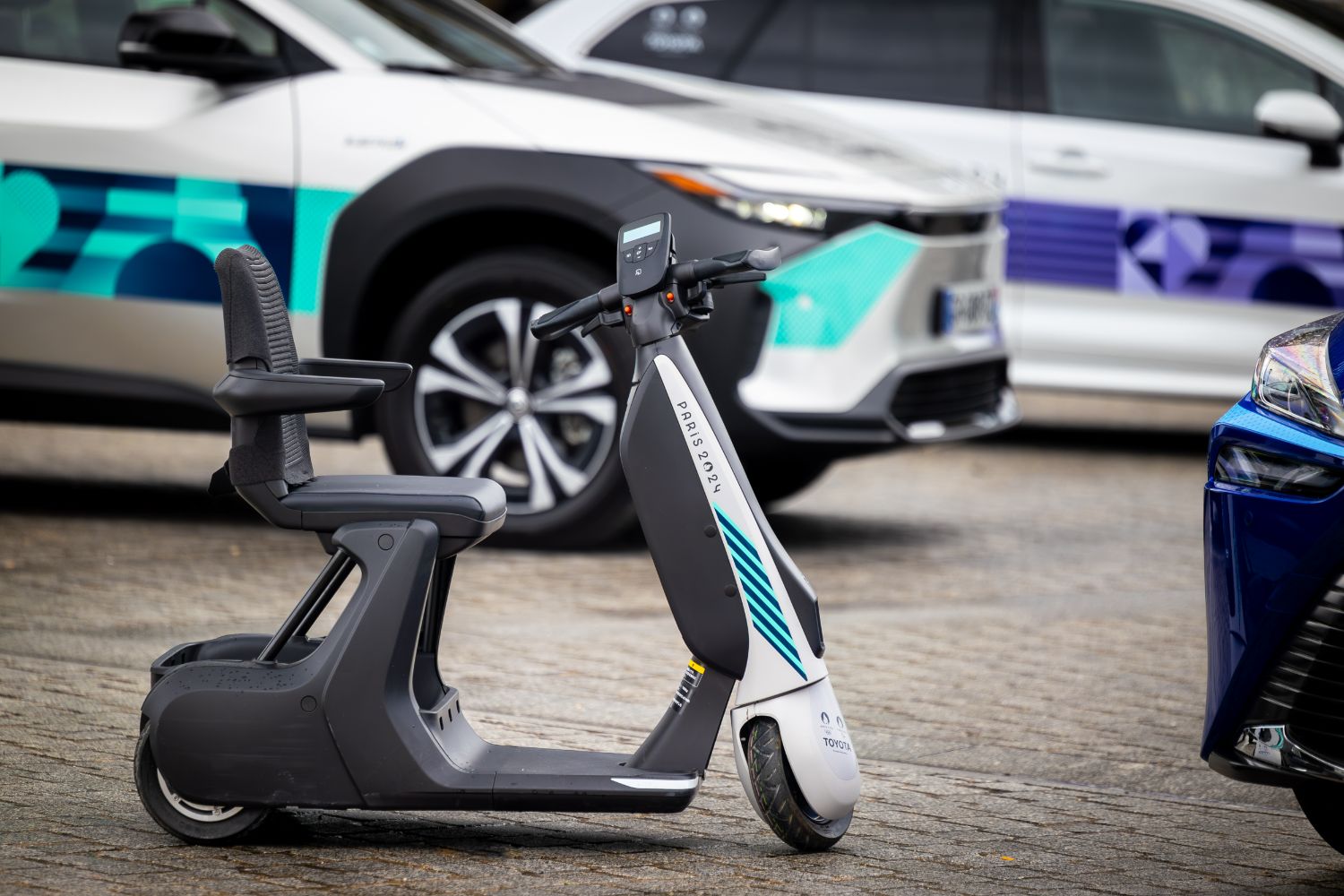
There will also be a fleet of C+ Walk-S personal mobility scooters designed to aid those with walking difficulties. These scooters operate at a normal walking pace, have three wheels for added stability, and have obstacle detection safety functions that help avoid collisions with obstacles or pedestrians ahead.
Hydrogen power
Of course, Toyota is providing cars too, with the bZ4X all-electric crossover taking pride of place in the official Olympic vehicle handover ceremony held in Paris. Toyota will also be sending plenty of its hybrid and plug-in hybrid vehicles, and - significantly - there will also be a fleet of hydrogen-powered Mirai cars.
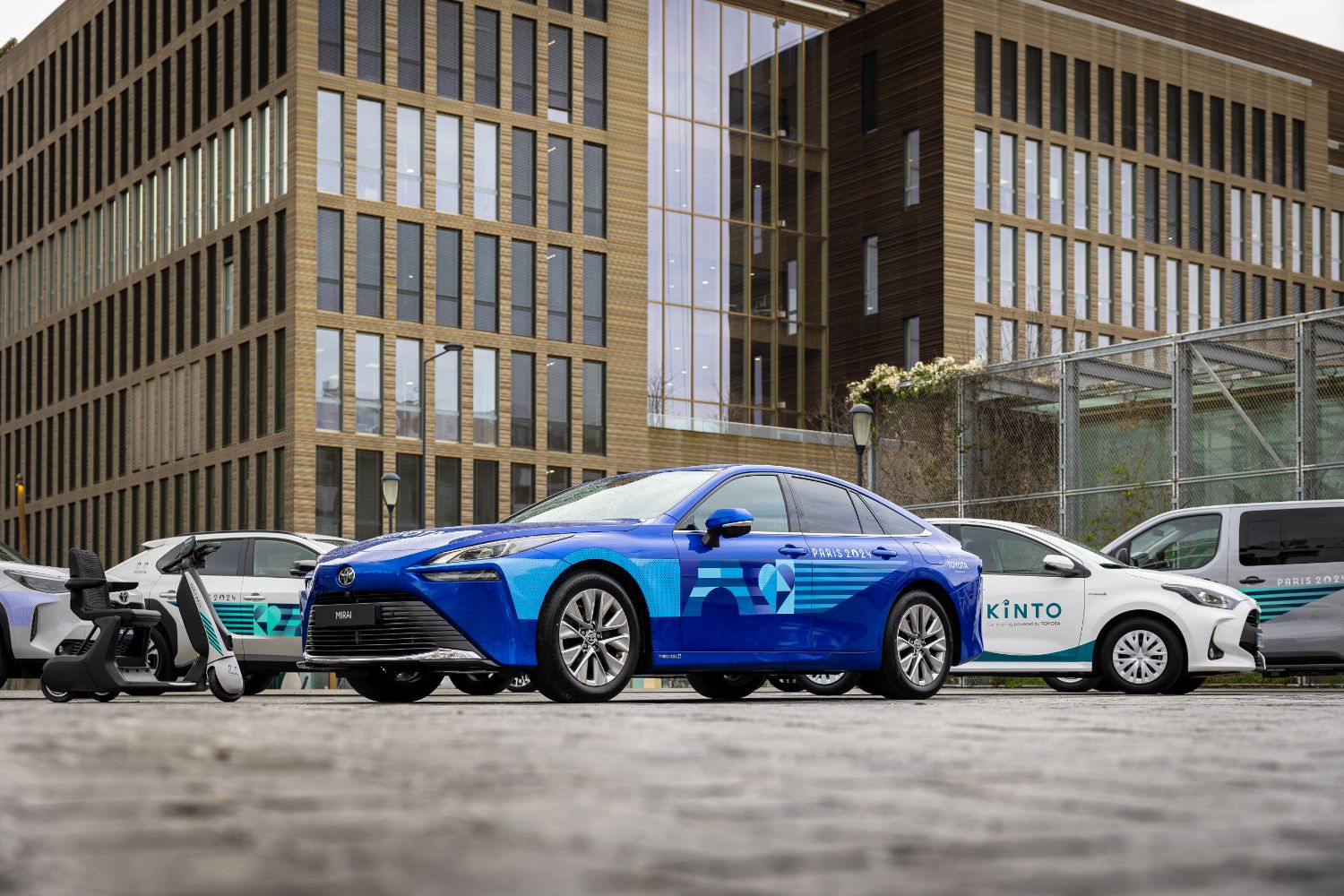
Why is that significant? Because in recent months, the whole hydrogen project seemed to have gone off the boil, at least in the public eye, with battery-electric models taking over in debates about the future of the car. Toyota, though, has never given up on its hydrogen ideals, and the very public Olympic outing for the Mirai seems to underline that.
Indeed, late last year, Toyota announced that its new 'Hydrogen Factory Europe' will be put in place in the coming years to "further grow Toyota hydrogen business and stimulate a wider roll-out of the hydrogen eco-systems and infrastructure across Europe."
"Europe is showing long-term confidence in hydrogen and so do we. We will continue to develop fuel cell passenger cars and other light duty vehicles while we have broadened our focus towards heavy-duty transport to support the expansion of viable hydrogen infrastructure. We aim to further develop and learn through testing in our own network and with partners who share our approach," said Thiebault Paquet, Toyota Motor Europe Vice President and Head of Fuel Cell Business.
Refuelled in minutes
While the hydrogen-for-passenger-cars thing has dropped off the radar somewhat, Toyota continues to press on with developing the technology, reminding us that hydrogen is by a long chalk the most abundant of all elements, and that hydrogen vehicles can be refuelled in mere minutes, unlike battery electric vehicles.
The hydrogen Mirais will even get a unique colour scheme to help them stand out, not only amid general Parisian traffic, but amongst the hordes of official Toyota Olympic and Paralympic vehicles.
"The designs for the Paris 2024 car fleet were created using graphic elements directly from the Look of the Games (gradients, stripes, dots, iconic landmarks all reminiscent of French cultures and 'art de vivre'). This creates a strong visual connection between the Games and Games activities on and off the playing fields. We emphasised the dynamism of the vehicles with a sleek design including glossy banners and matte trademarks. Finally, we carefully chose the colours for each of the technologies, in line with our multi-path strategy. We selected the blue colour for the fuel cell hydrogen vehicles because blue represents the colour of water, the only emission emitted by the vehicle tail pipe; green for the battery electric vehicles because green represents nature signifying the zero tailpipe emissions of BEV, while purple was chosen for the hybrid and plug-in hybrid vehicles, as the third colour of the Paris 2024 competition sites," said Jaime Noriega, Technical Manager Styling Division Toyota Motor Europe.
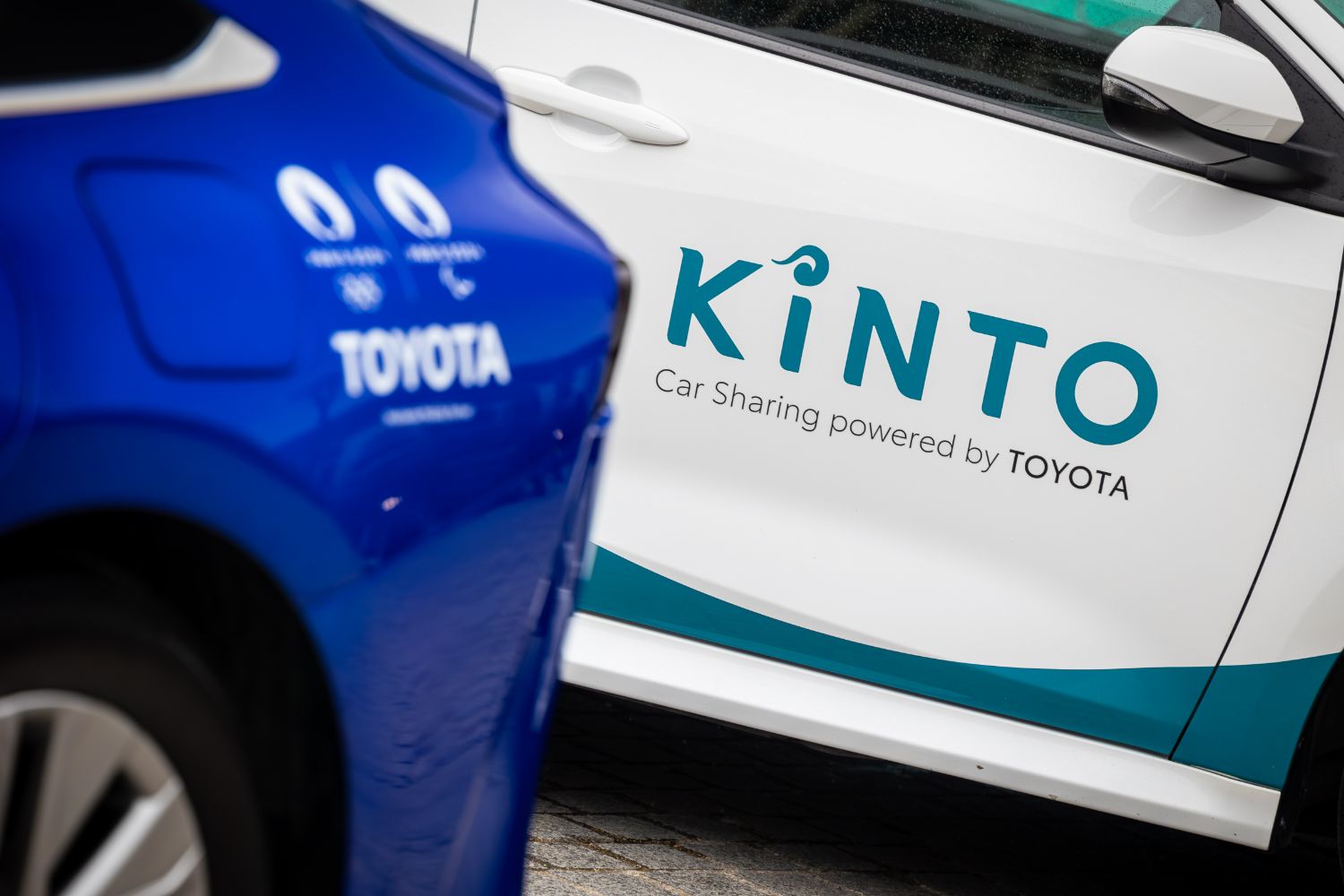
On-demand vehicles
Toyota's Kinto service - a short-term, on-street rentals offering, which is similar to the Yuko service seen in Ireland - will also be represented at the Games, and is a signal that Toyota is steadily moving into spheres of car use other than simple ownership. The plan is that Kinto will provide vehicles for use by officials of the Games who need to get to and from locations that are not easily accessible by public transport.
That, and the reminder that hydrogen power is still a critical factor for the future of transport, is a big part of Toyota's message for the 2024 games, underlining the company's commitment to a multi-mode solution to the problems of decarbonising how we get about.
"At Toyota, we are delighted to embark on this journey with Paris 2024, exemplifying our commitment to pioneering sustainable mobility solutions. Our multi-path approach to reduce carbon emissions, is at the core of the Toyota fleet to be made available to the Olympic and Paralympic family at Paris 2024. Toyota will bring a 100 per cent electrified passenger vehicle fleet to Paris, in line with our commitment to reduce carbon emissions," said Yoshihiro Nakata, President and CEO of Toyota Motor Europe.
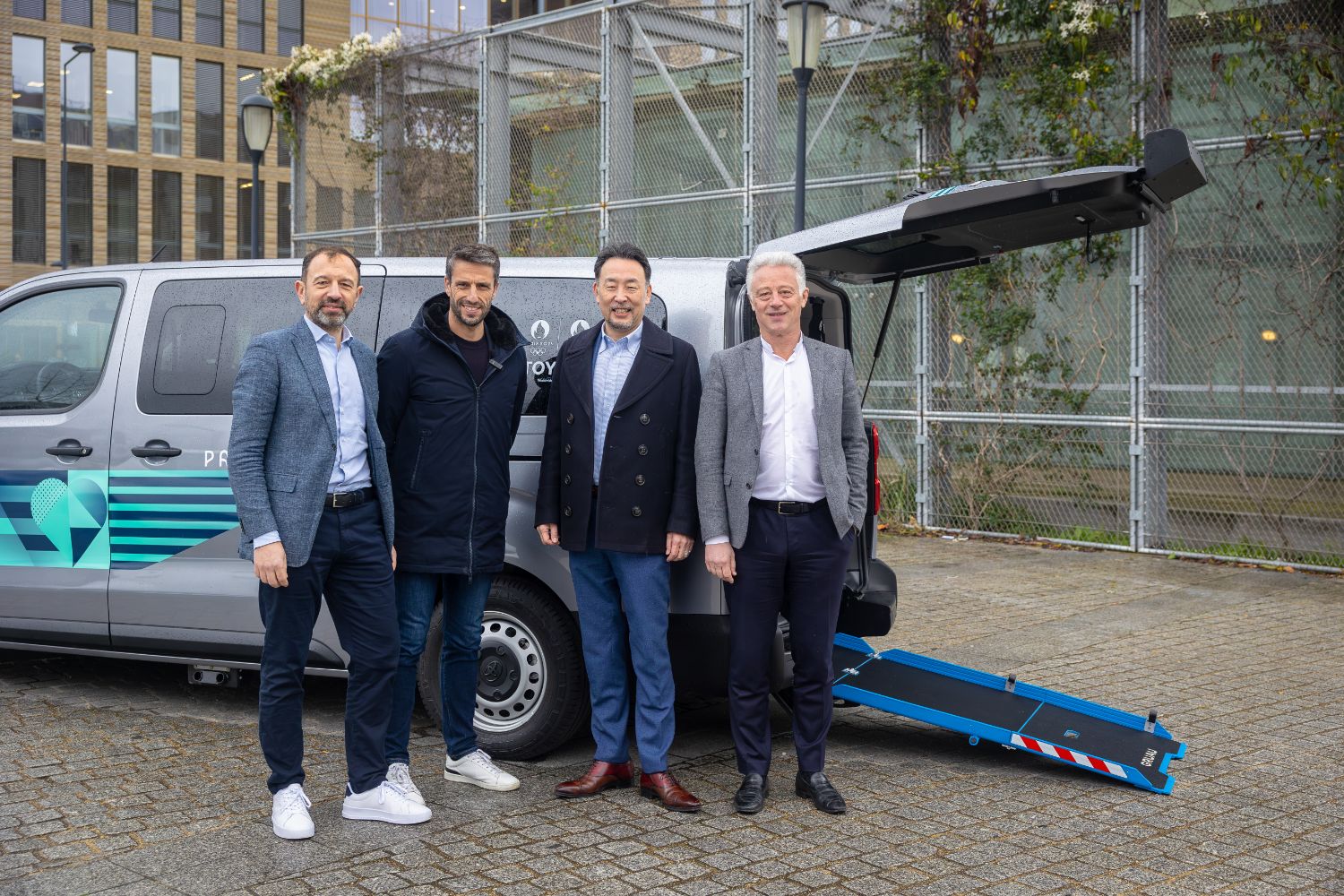
"Working with Toyota as the global mobility partner of the Olympic and Paralympic Games Paris 2024 enables us to act towards a more accessible and inclusive mobility. And a more responsible one too, as we focus on our goal of reducing greenhouse gas emissions in every aspect of the Paris 2024 Games. Experiencing the Toyota Kinto car sharing services to our employees is an integral part of supporting our sustainability goals. It enables our employees to move around more sustainably and safely during the preparations for the Games, setting a high standard for mobility excellence during the Olympic and Paralympic Games Paris 2024. Moreover, providing inclusive last mile solutions for our staff with disabilities, like the C+Walk, exemplifies Toyota's commitment to Mobility for All. I want to thank Toyota for their commitment to share and bring our ambitions to life," said Tony Estanguet, President of Paris 2024.

